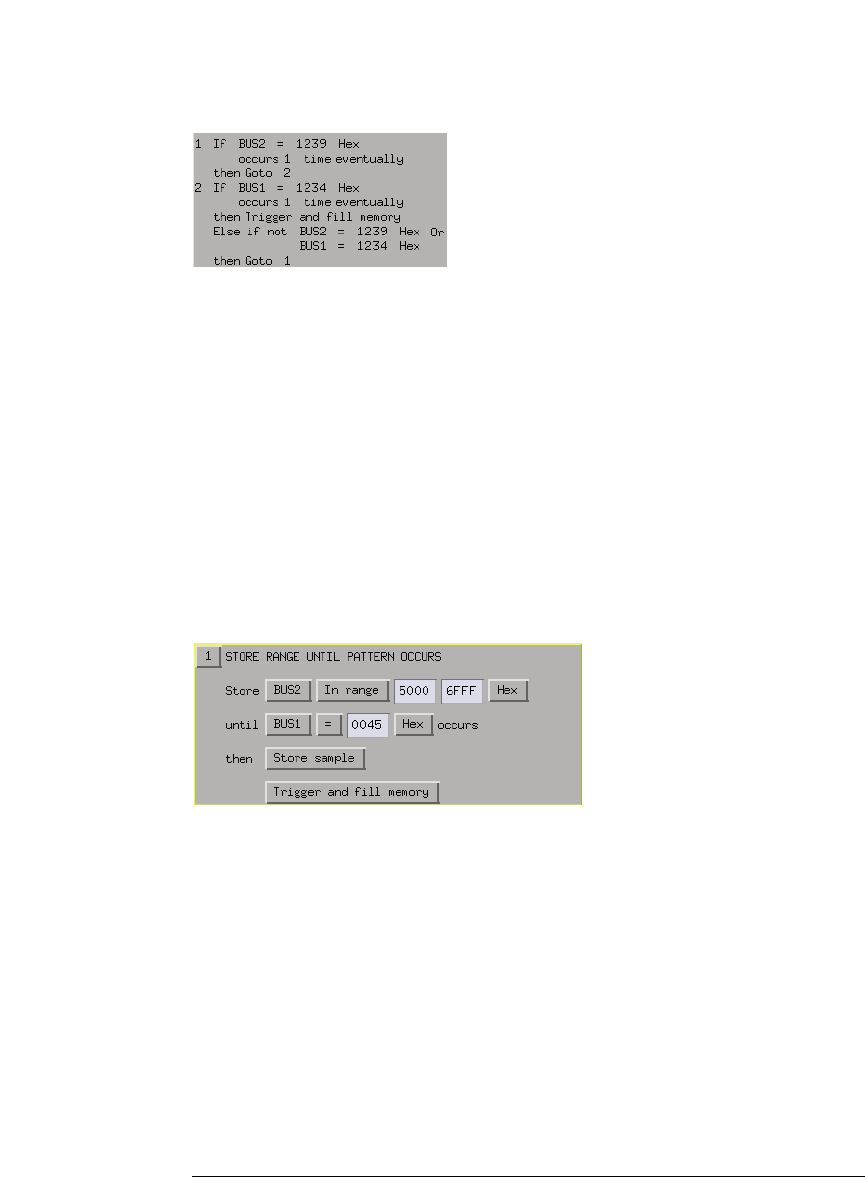User's Manual
Table Of Contents
- Agilent Technologies 16750A/B Logic Analyzer
- Agilent Technologies 16750A/B Logic Analyzer
- Contents
- Getting Started
- Step 1. Connect the logic analyzer to the device under test
- Step 2. Choose the sampling mode
- Step 3. Format labels for the probed signals
- Step 4. Define the trigger condition
- Step 5. Run the measurement
- Step 6. Display the captured data
- For More Information...
- Example: Timing measurement on counter board
- Example: State measurement on counter board
- Task Guide
- Probing the Device Under Test
- Choosing the Sampling Mode
- To select transitional timing or store qualified
- Formatting Labels for Logic Analyzer Probes
- Setting Up Triggers and Running Measurements
- Displaying Captured Data
- Using Symbols
- Printing/Exporting Captured Data
- Cross-Triggering
- Solving Logic Analysis Problems
- Saving and Loading Logic Analyzer Configurations
- Reference
- The Sampling Tab
- The Format Tab
- Importing Netlist and ASCII Files
- The Trigger Tab
- The Symbols Tab
- Error Messages
- Must assign Pod 1 on the master card to specify actions for flags
- Branch expression is too complex
- Cannot specify range on label with clock bits that span pod pairs
- Counter value checked as an event, but no increment action specified
- Goto action specifies an undefined level
- Maximum of 32 Channels Per Label
- Hardware Initialization Failed
- Must assign another pod pair to specify actions for flags
- No more Edge/Glitch resources available for this pod pair
- No more Pattern resources available for this pod pair
- No Trigger action found in the trace specification
- Slow or Missing Clock
- Timer value checked as an event, but no start action specified
- Trigger function initialization failure
- Trigger inhibited during timing prestore
- Trigger Specification is too complex
- Waiting for Trigger
- Analyzer armed from another module contains no "Arm in from IMB" event
- Specifications and Characteristics
- Concepts
- Understanding Logic Analyzer Triggering
- Understanding State Mode Sampling Positions
- Getting Started
- Glossary
- Index

205
Chapter 4: Concepts
Understanding Logic Analyzer Triggering
The same trigger as If/Then statements
Trigger functions can be modified. For example, if you start with the
function “Find Edge”, you can add another event, and it becomes the
same as “Find Edge and Pattern”. Therefore, a function that is not
exactly correct can often be converted into the desired trigger. It is also
possible to break down a function into the underlying If/Then
statements and modify them.
The functions “Store range until pattern occurs” and “Store nothing
until pattern occurs” make storage qualification much easier. These
functions completely override the Default Storage. The “Store range
until pattern occurs” function is shown in the following figure.
Store range until pattern occurs
Trigger functions are like building blocks because they can be used
together in a trigger sequence. For example, if you want to set up a
trigger as “Find edge followed by pattern”, you can use a “Find Edge”
function for Level 1 and a “Find Pattern” function for Sequence Level 2
(see the following figure). So, functions are useful both as an entire
trigger sequence and as one step in a trigger sequence.










